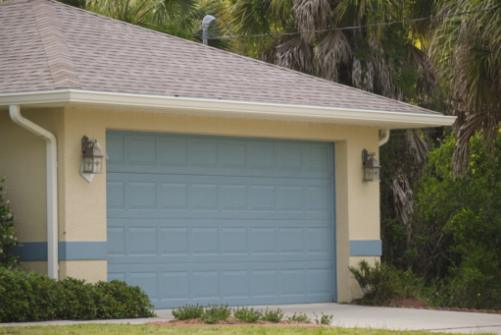Garage Door Weatherproofing: The Key to a Well-Maintained Home
22 March 2025 by Saira V.A well-maintained home starts with the basics, and one crucial aspect that often gets overlooked is weatherproofing the garage door. In addition to protecting your vehicle and belongings, proper weatherproofing can also enhance home security and energy efficiency. From selecting the right materials to troubleshooting common issues, this comprehensive guide will walk you through the importance of weatherproofing your garage door and provide step-by-step instructions for installation and maintenance.

Importance of Weatherproofing Your Garage Door
Weatherproofing your garage door is essential for maintaining the overall integrity of your home. It not only helps to protect your garage and belongings from the elements, but also contributes to better energy efficiency and security for your home. Without proper weatherproofing, your garage door is vulnerable to damage from rain, wind, and snow, as well as potential intruders. By taking the time to weatherproof your garage door, you are investing in the long-term protection and maintenance of your home.Selecting the Right Weatherproofing Materials
When it comes to weatherproofing your garage door, selecting the right materials is crucial in ensuring the effectiveness and longevity of the seal. There are several options to choose from, including vinyl, rubber, and metal weather seals, each with their own advantages and drawbacks. It is important to consider factors such as the climate in your area, the size of your garage door, and the level of protection you require when selecting the right weatherproofing materials. By choosing high-quality materials that are designed to withstand the elements, you can ensure that your garage door remains well-protected against wind, rain, and extreme temperatures.Step-by-Step Guide to Installing Weather Seals
Installing weather seals on your garage door is a relatively simple and cost-effective way to improve the energy efficiency of your home and protect your garage from the elements. Follow these step-by-step instructions to ensure a proper installation:1. Measure the perimeter of your garage door: Use a measuring tape to determine the length of weather seal needed for each side of your garage door. Be sure to account for any gaps or irregularities in the door frame.
2. Purchase the appropriate weather seals: There are several types of weather seals available, including vinyl, rubber, and foam. Consider the climate in your area and the specific needs of your garage when selecting the type of weather seal to use.
3. Clean the garage door and door frame: Before installing the weather seals, thoroughly clean the surface of the garage door and the door frame to ensure a secure attachment.
4. Install the weather seals: Starting at the top of the garage door, carefully attach the weather seal to the door frame using the adhesive or screws provided. Work your way down, making sure the weather seal is securely fastened and the entire perimeter of the door is covered.
5. Trim any excess material: Once the weather seals are installed, use a sharp utility knife to trim any excess material for a clean and professional finish. By following these simple steps, you can effectively weatherproof your garage door and improve the overall maintenance of your home.
Maintenance Tips for Your Weather-Sealed Garage Door
Once you have installed weather seals on your garage door, it is important to regularly maintain them to ensure they continue to effectively keep out the elements. Here are some maintenance tips for your weather-sealed garage door:1. Regular Cleaning: It is important to regularly clean the weather seals to prevent dirt and debris from building up and causing damage. Use a mild detergent and water to gently clean the weather seals, and avoid using harsh chemicals that could deteriorate the material.
2. Inspect for Damage: Periodically inspect the weather seals for any signs of damage such as cracks, tears, or gaps. If you notice any damage, it is important to promptly repair or replace the weather seals to maintain their effectiveness.
3. Lubrication: Applying a silicone-based lubricant to the weather seals can help keep them flexible and prevent them from drying out and cracking. Be sure to use a lubricant that is safe for the material of your weather seals.
4. Check for Proper Alignment: Ensure that the weather seals are properly aligned and making full contact with the garage door when it is closed. If you notice any gaps or areas where the seals are not meeting the door, adjust them as needed to maintain a tight seal.
5. Trim Excess Material: Over time, the weather seals may become stretched or have excess material that could interfere with their effectiveness. Trim any excess material to ensure the seals are properly fitted to the garage door. By following these maintenance tips, you can ensure that your weather-sealed garage door continues to provide protection against the elements and helps to keep your home well-insulated and energy-efficient.